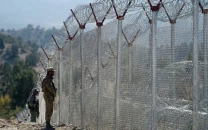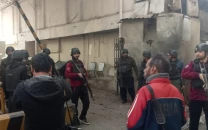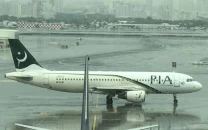After the rains
We need to put better flood control systems in place. In this age of technology, this is not an impossible task.

The same questions arise as those which have come up in previous years: was there sufficient readiness? Were people warned in advance given that the rains had been forecast? Sadly, as has been the case before, the answers appear to be in the negative. Authorities need to tell us why this is the case and what is being done to prevent possible havoc in the areas in Sindh and Punjab where more rain is expected. It seems we have learnt little from the scenes of disaster and human suffering that we saw in both 2010 and 2011.
But this time around, there was a further and still more alarming element to the deluge. The hill torrent which ravaged DG Khan poured down the mountainside with such force for the first time in history that it threatened the nuclear facility in the area, triggering panic among staff. The torrent was diverted to the city to save the plant. This should make us think about the safety of our nuclear arsenal, which apparently faces a risk both from terrorists and the forces of nature. Safeguards are required to prevent possible catastrophe.
At a wider level, we need to put better flood control systems in place. In this age of technology, this is not an impossible task. Even if damage cannot be fully prevented, it can at least be contained — and this should be our principal goal given that we are familiar with the havoc rains can bring with them as they pour down from the skies.
Published in The Express Tribune, September 12th, 2012.














COMMENTS
Comments are moderated and generally will be posted if they are on-topic and not abusive.
For more information, please see our Comments FAQ